Welcome to the world of pressure cookers. Although you may have seen these devices before, you probably associate them with overcooked vegetables and bland, tasteless food. Nothing could be further from the truth! In fact, pressure cooking today is a combination of advanced technology and healthy, tasty food. Pressure cookers have become an essential part of the modern kitchenin many cases replacing the ubiquitous microwave. In this book, youll find 500+ great recipes to try at home. Dont be afraid to experimenthalf the fun of this kind of cooking is adding new ingredients and tasting the results.
PART I
PRESSURE COOKERS 101
Pressure cookers cook food up to 70 percent faster than conventional methods. Steam trapped in the pot builds up pressure, which creates a hotter cooking temperature. The pressure bears down on the surface of the liquid, which isnt able to break down the molecules to create more steam; this produces more heat. The end result is that the pressure raises the boiling point. The tight seal on the cooker also helps seal in vitamins and minerals and prevents the cooker from boiling dry during the cooking process. Todays improved pressure cookers usually feature a stationary pressure regulator thats either a fixed weight or a spring valve.
The pressure regulator keeps the pressure even in the cooker by occasionally releasing a burst of steam. The pressure regulator also provides an easy way to quick-release the pressure at the end of the pressure cooking time; this is usually done by pressing a button or flipping a pressure-release switch. New pressure cookers have backup pressure-release mechanisms that prevent the excess pressure accidents that were associated with older models. They also have safety features that cause the lid to remain locked into place until after all of the pressure has been released.
Equipment Considerations
Your cooking equipment can make a difference in how easy it is to prepare foods. Buy the best you can afford.
Better pan construction equals more even heat distribution, which translates to reduced cooking time and more even cooking. Food will burn more easily in an inexpensive pan with a thinner pan bottom. How well your cooking pan conducts the heat will make a difference in how high you set the burner temperature. With some practice, youll soon learn the perfect heat settings for your pressure cooker: It might take a medium-high setting to saut food in an inexpensive pressure cooker and a lot more stirring to prevent the food from burning, but you can accomplish the same task in a heavier pan when its over medium heat, and with less frequent stirring. On the flipside, a heavier pan will retain the heat longer once its removed from the burner than will an inexpensive one, so to prevent it from overcooking, food cooked to perfection in a heavier pan must be moved to a serving dish more quickly. This is especially true of foods like gravy that tend to thicken the longer they sit; gravy can turn from a succulent liquid to one big lump if it stays on the heat too long.
Read the instruction manual that came with your pressure cooker. Never exceed the fill line for your pressure cooker; adjust the recipe or prepare it in two batches if you need to. Overfilling the pressure cooker can cause it to explode, so be careful!
Pressure Release Methods
The ways pressure is released from the pressure cooker are: The natural-release method, which refers to turning off the heat under the pressure cooker and either removing the pan from the heat or letting the pan remain on the burner, and then waiting until the pressure cooker has cooled sufficiently for all of the pressure to be released. The quick-release method, which refers to using the valve on the pressure cooker to release the pressure. The cold-water release method, which occurs when the pan is carried to the sink and cold water from the tap is run over the lid of the pressure cooker (but not over the valve!) until the pressure is released.
Explanation of Cooking Methods
Cooking terms that youll encounter in this book are: Bain-marie, or water bath, is a method used to make custards and steamed dishes by surrounding the cooking vessel with water; this helps maintain a more even cooking temperature around the food.
Baking involves putting the food in a preheated oven; the food cooks by being surrounded by the hot, dry air of your oven. In the pressure cooker, foods that are traditionally baked (like a cheesecake, for example) are baked in a covered container thats placed on a rack submerged in water. The water in the bottom of the pressure cooker creates the steam that builds the pressure and maintains the heat inside the pressure cooker. The cover over the pan holding the food maintains the dry environment inside. Braising usually starts by browning a less expensive cut of meat in a pan on top of the stove and then covering the meat with a small amount of liquid, adding a lid or covering to the pan, and slowly cooking it. Braising can take place on the stovetop, in the oven, or in a slow cooker or pressure cooker.
The slow-cooking process tenderizes the meat. The cooking environment in the pressure cooker greatly reduces the braising time needed. For example, a roast that would normally take two and a half to three hours in the oven or on the stove only requires forty-five to sixty minutes in the pressure cooker. Deglazing refers to the process of ridding a pan of any excess remaining fat by putting it over a medium-high heat and then adding enough cooking liquid to let you scrape up any browned bits stuck to the bottom of the pan. Doing this step before you add the other ingredients for your sauce or gravy gives the end result more flavor and color. Poaching is accomplished by gently simmering ingredients in broth, juice, water, wine, or other flavorful liquids until theyre cooked through and tender.
Roasting, like baking, is usually done in the oven, but generally at a higher oven temperature. Roasting meat in the moist environment inside a pressure cooker requires some trial and error because you cant rely on a programmable meat thermometer to tell you when the meat has reached the desired internal temperature. The upside is that the meat will roast much quicker when browned and then placed on the rack in a pressure cooker, and, even if its cooked beyond your preferred preference, the meat will still be more moist than it would be if you had cooked it to that point in the dry environment of an oven. Sauting is the method of quickly cooking small or thin pieces of food in some oil or butter that has been brought to temperature in a saut pan (or in the pressure cooker) over medium to medium-high heat. Steaming is the cooking method that uses the steam from the cooking liquid to cook the food. Stewing, like braising, involves slowly cooking the food in a liquid; however, stewing involves a larger liquid-to-food ratio.

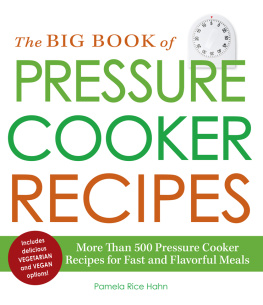

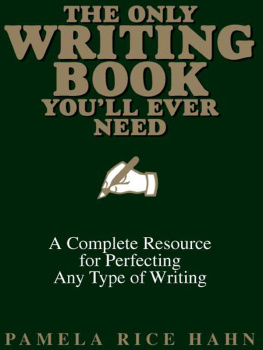
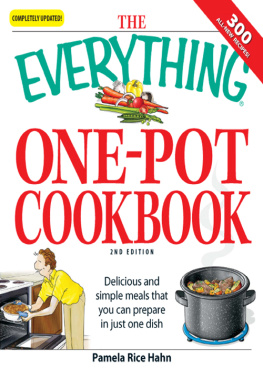
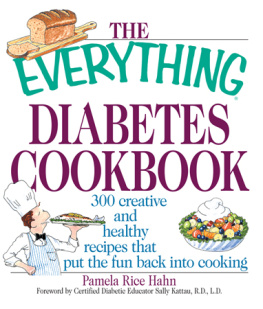


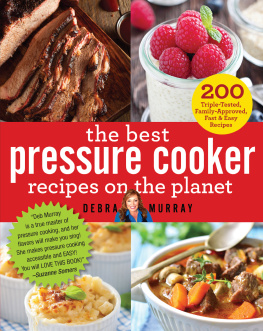
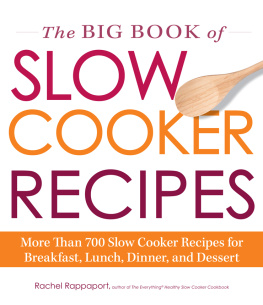
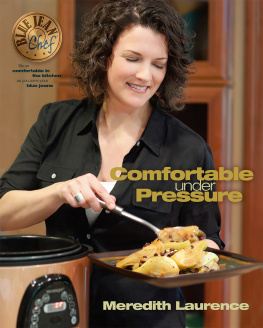

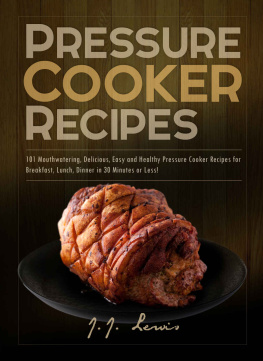

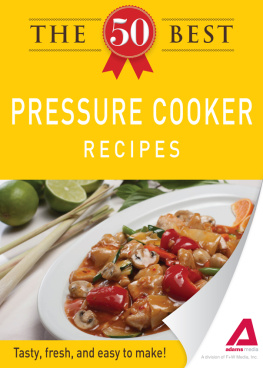

 Avon, Massachusetts
Avon, Massachusetts  . This means the recipe is vegetarian. Pressure cookers are great for preparing vegetarian food. In fact, in many ways theyre the preferred method for this kind of cooking, since they allow you to use a wide variety of grains and beans, due to the shortened cooking times. Youll also find a wide variety of pressure cooker recipeseverything from a healthy breakfast to start the day to mouth-watering desserts, including cakes, pies, and puddings. Have fun. Have fun.
. This means the recipe is vegetarian. Pressure cookers are great for preparing vegetarian food. In fact, in many ways theyre the preferred method for this kind of cooking, since they allow you to use a wide variety of grains and beans, due to the shortened cooking times. Youll also find a wide variety of pressure cooker recipeseverything from a healthy breakfast to start the day to mouth-watering desserts, including cakes, pies, and puddings. Have fun. Have fun.